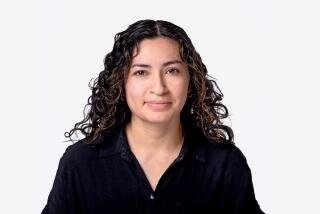About This Series
Times staff writer Thomas Curwen met Ana Rodarte in December 2005 at Scripps Memorial Hospital in La Jolla. Over the next 3 1/2 years, he conducted extensive interviews with her and her parents, and he and Ana engaged in an e-mail correspondence about living with neurofibromatosis.
Curwen and Times staff photographer Allen J. Schaben visited the Rodarte home in Riverside County nearly a dozen times for birthday parties, family gatherings and celebrations. They accompanied Ana to consultations with her doctors, and they observed three surgeries at Scripps aimed at restoring her facial features.
Times staff writer Paloma Esquivel served as interpreter during interviews with Ana’s parents, Ismael and Margarita Rodarte.
Additional interviews were conducted with Ana’s principal surgeons, Munish Batra and Michael Halls, and with Andrew Chang, Don Kikkawa, Lokesh Tantuwaya and James Tasto, doctors who participated in her treatment. Lori Varaich, administrator of Doctors Offering Charitable Services, a charitable organization that funded Ana’s surgeries, provided assistance.
Also interviewed: Fran Vigil, a friend of the Rodarte family who contacted Batra on Ana’s behalf, and Vicki Wiesen, a patient of Batra and Halls who became Ana’s friend.
Information about Ana’s childhood and adolescence was provided by her aunt, Teresa Saucedo, and cousins Edward “Lalo” Saucedo and Veronica Saucedo. Background on her high school years came from her friend Patricia Sandoval and teachers Paul Hendry, James Rizor and Susie Esquire.
Ana’s attending physician at Loma Linda University Medical Center, Dr. Robert Hardesty, reviewed her medical records from 10 years of treatment there, and Richard Schaefer and Greg Nelson provided historical information about the hospital.
Information about neurofibromatosis was provided by Batra and Halls; Alice Gordon of the Children’s Tumor Foundation; and the following medical professionals at Childrens Hospital Los Angeles: J. Gordon McComb, division head of pediatric neurosurgery; Tena Rosser, a pediatric neurologist and co-director of the neurofibromatosis clinic; Linda Randolph, acting head of medical genetics; and Barbara Britt, nurse care manager for the neuro-oncology program.
Information about craniofacial anatomy and anomalies was provided by Debbie Oliver, executive director of AmeriFaceChildrens Hospital Los Angeles; Kathleen Kapp-Simon, a pediatric psychologist at Shriners Hospital for Children in Chicago; and Michael G. Mackanic, a specialist in emergency medicine at Kaiser Permanente, West Los Angeles.
Assistance at Scripps Memorial Hospital La Jolla was provided by chief executive Gary Fybel and public relations manager Lisa Ohmstede.
Information about the naturalization ceremony where Ana became a U.S. citizen came from Frank Galvan, jury and naturalization manager, U.S. District Court in Los Angeles; Rico Cabrera, community relations officer for the Los Angeles district of the U.S. Citizenship and Immigration Services; Marie Sebrechts, regional media manager for the immigration agency; and Sharon Autry of the Pomona Fairplex, where the ceremony was held.
Written sources for this series include “The Face: A Natural History” by Daniel McNeill and “About Face,” a publication of Mun-H-Center, the Swedish National Orofacial Center for Rare Disorders.
Also: “Autobiography of a Face” by Lucy Grealy; “Sam: The Boy Behind the Mask” by Tom Hallman; “The Elephant Man: A Study in Human Dignity” by Ashley Montagu; “The Elephant Man,” a play by Bernard Pomerance; “Neurofibromatosis: A Handbook for Patients, Families and Health Care Professionals” by Bruce R. Korf and Allan E. Rubenstein; and “Neurofibromatosis: Phenotype, Natural History, and Pathogenesis,” edited by J.M. Friedman, David H. Gutmann, Mia MacCollin and Vincent M. Riccardi.
More to Read
Start your day right
Sign up for Essential California for news, features and recommendations from the L.A. Times and beyond in your inbox six days a week.
You may occasionally receive promotional content from the Los Angeles Times.






